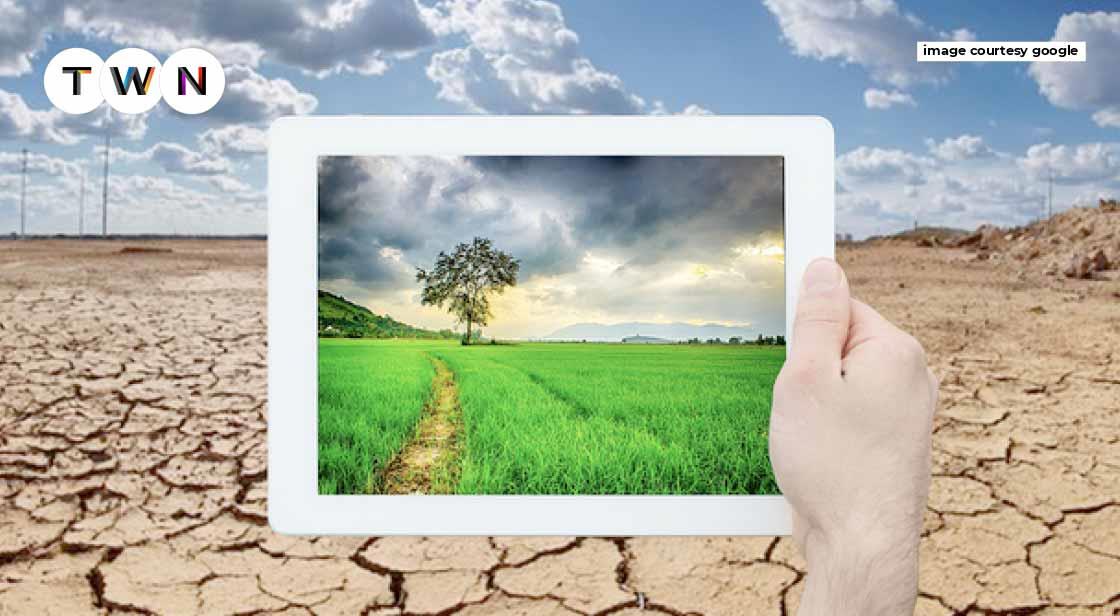
To avoid the worst effects of climate change and assure a more secure future, the entire world must quickly transition to a low-carbon economy. If further rising to 1.5 degrees Celsius beyond pre-industrial levels is to be limited, greenhouse gas emissions must peak by 2025 and then rapidly drop, according to the most current Intergovernmental Panel on Climate Change (IPCC) report. In order for the IPCC assessment to be completed, new technology to minimise greenhouse gases must be put to the test.
To attain that goal, we'll need to quickly scale up existing clean energy solutions, create new clean energy production and storage systems, and look into ways to mitigate past emissions. Technological innovation will be crucial at each step. The importance of technology in climate change is clear, and here's how you can utilise it to help the environment:
Technology's Impact on Climate Change
Scale Up Quickly Clean Energy Solutions Currently in Use
Wind, solar, and nuclear power are examples of clean and economical energy alternatives that have been made possible by innovation. We must extend the use of existing clean energy sources and continue to enhance their efficiency if we are to fully benefit from them. Advances in 3D printing and artificial intelligence (AI) will be crucial.
AI models are already being used to optimise the construction of wind turbine blades and predict the unpredictability of wind-energy production to control supply and demand changes.
Manufacturers are employing 3D printing to make lighter solar panels with larger surface areas, increasing efficiency and lowering solar energy costs. Manufacturers will also be able to employ 3D printing to quickly develop, test, and commercialise complicated designs for next-generation nuclear reactors.
Develop new ways to generate and store clean energy.
Increasing the efficacy of today's climate remedies can only bring us so far in meeting our climate goals. To attain net-zero energy, new technologies and solutions will be required that are not now generally available or inexpensive.
If intermittent renewables like solar and wind power are to replace significant amounts of greenhouse gas emissions, better energy storage options are required. While recent advances in battery technology are encouraging, there is still a need for safer, lighter battery packs that do not require the use of specific materials. Although quantum computing is still in its infancy, it has the potential to unleash improved material attributes and design combinations for next-generation batteries. There is a need to tap into alternative forms of energy such as nuclear fusion, which has long been regarded as the "holy grail" of research and innovation due to its potential to provide an infinite source of safe, viable, and efficient energy, in addition to coming up with new ways to conserve energy. The most positive influence of technology on climate change will be the ability to obtain cleaner, safer energy.
Nuclear fusion, unlike existing nuclear reactors, produces a plasma hotter than the sun's core by splitting uranium and other heavy subatomic particles into smaller nuclei in a process known as nuclear fission. Because plasma is so unstable, it's difficult to keep the nuclear fusion process going within a reactor. DeepMind's use of deep learning to find ways to manage fusion reactions, on the other hand, gives hope that nuclear fusion will one day become a viable energy source. Because plasma is so unstable, it's difficult to keep the nuclear fusion process going within a reactor. DeepMind's use of deep learning to find ways to manage fusion reactions, on the other hand, gives hope that nuclear fusion will one day become a viable energy source.
With existing and future renewable energy sources and batteries, achieving a net-zero future will be unachievable. Long-distance transportation necessitates the employment of high-energy-density energy carriers. As a result, shipping and aircraft continue to be fuel-dependent rather than energy-storage-dependent. Green hydrogen and synthetic biofuels could help these traditionally polluting businesses make the switch to cleaner energy. Advances in genetic manipulation and synthetic biology will almost probably offer up new options for improving biofuel production efficiency by changing the DNA of the plants that produce them.
Controlling Emissions from the Past
Even with strong energy transition initiatives, removing greenhouse gases from the atmosphere purposefully will almost probably be a critical strategy for offsetting historical emissions as well as emissions from slow industries. Carbon dioxide removal (CDR) is a term that refers to a number of techniques for extracting carbon dioxide directly from the environment and storing it in natural or man-made storage tanks in order to generate negative emissions.
Plants with extra carbon dioxide in their root systems, as well as water treatment systems that store carbon from the ocean in rock, are being examined. However, in order to implement these and other CDR strategies on a large scale and in time to fulfil the climate crisis's urgent needs, a significant amount of funding will be required. Projects like the Earth Shot, which focuses on removing carbon dioxide from the atmosphere, are an excellent place to start, but more public-private cooperation is required.
Transformation Restructuring
By bringing together breakthrough start-ups and more established firms, the World Economic Forum facilitates the exchange of ideas and options that will impact transformations in the energy sector and beyond. We expect over 100 experts and entrepreneurs from the new ICT Trailblazers and Global Innovators communities to attend the Annual Meeting 2022 in Davos.
Tags:
technological innovation for climate change mitigation, role of technology in climate change, impact of technology on climate change


























